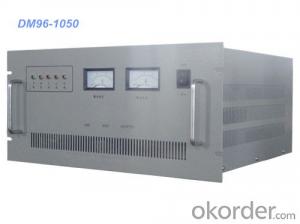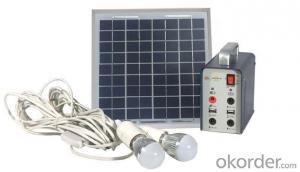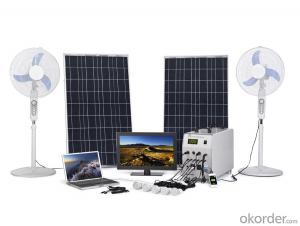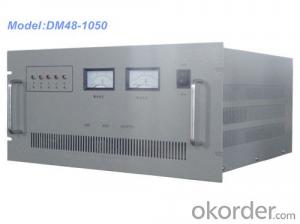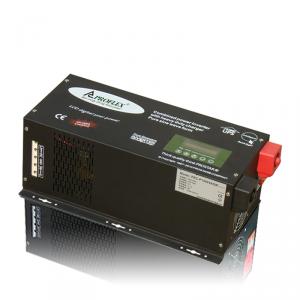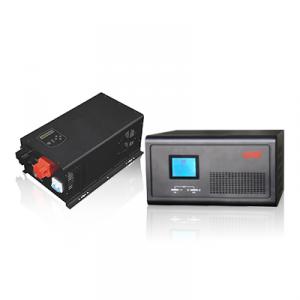Solar Energy Systems Oman - Pure Sine Wave Inverter/Solar Power Inverter 5kVA 96/110/120V with Isolate Transformer
- Loading Port:
- Qingdao
- Payment Terms:
- TT OR LC
- Min Order Qty:
- 1 unit
- Supply Capability:
- 800 unit/month
OKorder Service Pledge
OKorder Financial Service
You Might Also Like
Specifications
1.using IGBT from Mitsubishi company
2.using American ATEMEL company microprocessor
3.Max. Efficiency>94%
Features:
1. using IGBT from Mitsubishi company as the power components
2. using American ATEMEL company microprocessor as figure controller
3. perfect protection and warning functions
4. circuit frame compact,Max. Efficiency≥94%
5. with wide input voltage range
6. RS232/485 communication,multi communication interface can be selected
7. big-screen English LCD, perfect display, interface-friendly
Off Grid Pure Sine Wave Inverter 5KW 96/110/120V for wind power and PV power with factory price
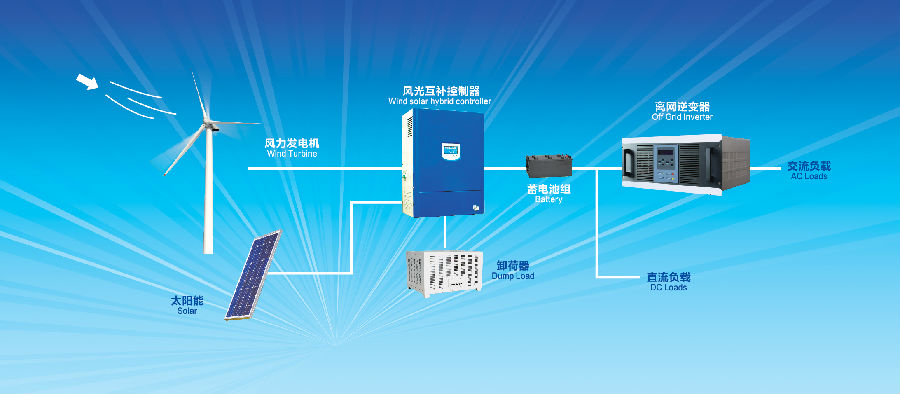
Technical Data Sheet
Type | ND96-5KD | ND110-5KD | |||
DC input | Input rated voltage | 96 VDC | 110 VDC | ||
Input rated current | 52 A | 45.5 A | |||
Input DC voltage range | 75-135 VDC | 80-145 VDC | |||
AC input | Allow input voltage range | 110 VAC / 120 VAC / 220 VAC / 240 VAC ± 15% | |||
Input rated current | 45.5A / 41.7A / 22.5 A / 21A | ||||
Bypass transfer time | ≦4 ms | ||||
AC output | Rated capacity | 5KVA | |||
Output rated power | 4KW | ||||
Output rated voltage and frequency | 110 VAC / 120 VAC / 220 VAC / 240 VAC,50Hz / 60Hz | ||||
Output rated current | 45.5A / 41.7A / 22.5 A / 21A | ||||
Output voltage accuracy | 110 VAC / 120 VAC / 220 VAC / 240 VAC± 2% | ||||
Output frequency accuracy | 50Hz / 60Hz ± 0.05% | ||||
Waveform distortion (THD). | ≤3% | ||||
Dynamic response time | 5% | ||||
Power factor (PF) | 0.8 | ||||
Overload capacity | 120%,3minutes,150%,10second | ||||
Crest factor (CF) | 3:1 | ||||
Inverter efficiency | 90% | ||||
Working Environment | Dielectric strength | 1500VAC,1minute | |||
Noise (1m) | ≤50dB | ||||
Ambient temperature | -10℃~+50℃ | ||||
Humidity | 0~90%,No condensation | ||||
Altitude | ≤5000 m | ||||
Industrial Frequency Transformer | Yes | ||||
Production function | Input reverse protection, input under-voltage protection, output overload protection, output short circuit protection, thermal protection | ||||
Dimensions | 482*420*223mm | ||||
Weight | 52kg | ||||
- Q: Can solar energy systems be used in areas with strict building codes?
- Yes, solar energy systems can be used in areas with strict building codes. However, the installation of these systems may require adherence to specific regulations and guidelines set by the local authorities. It is important to work with experienced professionals who are familiar with the building codes and can ensure that the solar energy system meets all the necessary requirements.
- Q: Can solar energy systems be used in remote areas without access to the power grid?
- Solar energy systems are indeed suitable for use in remote areas that lack access to the power grid. In fact, solar power often proves to be the perfect solution for such locations. These systems are comprised of solar panels that convert sunlight into electricity, which can then be used to power a variety of appliances and devices. Typically, off-grid remote areas do not have access to conventional electricity sources like power lines. However, solar energy systems offer an independent and sustainable power source. By harnessing the ample sunlight available in these areas, solar panels can generate electricity even without a power grid. In remote areas, solar energy systems can be designed to store excess energy in batteries. This ensures a continuous power supply, even on cloudy days or during the night. These battery systems enable the storage of solar-generated electricity, providing a dependable power source for various needs, such as lighting, communication devices, water pumps, refrigeration, and even small businesses. Moreover, the installation and upkeep of solar energy systems in remote areas are often more cost-effective compared to extending power lines from the grid. Solar panels have become increasingly affordable in recent years, and advancements in technology have boosted their efficiency and durability. Additionally, the absence of fuel expenses and the minimal requirement for ongoing maintenance make solar energy systems a sustainable and cost-efficient solution for remote areas. All in all, solar energy systems are an excellent choice for powering remote areas without access to the power grid. They offer a sustainable, reliable, and cost-effective source of electricity, enabling the growth and enhancement of communities in these remote locations.
- Q: How does solar energy impact job creation?
- Solar energy impacts job creation by creating a significant number of employment opportunities in various sectors such as manufacturing, installation, maintenance, and research and development. The growth of the solar energy industry has led to the creation of numerous jobs, both in the renewable energy sector and related industries. This includes positions for engineers, technicians, project managers, salespeople, and more. Additionally, as solar energy becomes more affordable and widely adopted, it stimulates economic growth and encourages investments, further boosting job creation in local communities.
- Q: Can solar energy systems be used for powering off-grid educational institutions?
- Yes, solar energy systems can be used for powering off-grid educational institutions. Solar panels can be installed on the roofs or grounds of the institutions to harness sunlight and convert it into electricity. This renewable energy source can provide a reliable and sustainable power supply, especially in remote areas where grid connectivity is limited or unavailable. Solar energy systems can effectively meet the energy demands of educational institutions, powering classrooms, lighting, computers, and other equipment. Additionally, it promotes environmental sustainability and reduces reliance on fossil fuels, making it a suitable option for off-grid educational institutions.
- Q: What is the role of solar energy systems in reducing stormwater runoff?
- Solar energy systems play a significant role in reducing stormwater runoff by providing a sustainable alternative to conventional energy sources. By harnessing the power of the sun, solar energy systems reduce the reliance on fossil fuels, which contribute to climate change and urban heat island effects. This, in turn, helps mitigate stormwater runoff by reducing the demand for energy-intensive solutions such as air conditioning, which leads to increased runoff due to increased impervious surfaces. Additionally, solar panels can be installed on rooftops and parking lots, creating shaded areas that reduce the temperature of these surfaces and minimize stormwater runoff. Overall, solar energy systems contribute to a more sustainable and resilient approach to managing stormwater runoff.
- Q: How do solar energy systems affect water quality?
- Solar energy systems have minimal direct impact on water quality. Unlike traditional energy sources such as coal or natural gas, solar energy systems do not release harmful pollutants or emissions. This means they do not contribute to water pollution through the release of toxic substances or thermal pollution. However, it is worth noting that the production and disposal of solar panels can have some indirect environmental impacts, including the potential for water pollution from the manufacturing process or improper disposal of old panels. Overall, though, solar energy systems have a positive effect on water quality compared to other energy sources.
- Q: How does the efficiency of solar panels vary across different manufacturers?
- The efficiency of solar panels can indeed vary across different manufacturers. There are several factors that contribute to this variation. Firstly, the quality and type of materials used in the production of solar panels can greatly impact their efficiency. Manufacturers may use different types of silicon, such as monocrystalline or polycrystalline, which have varying degrees of efficiency. Monocrystalline silicon panels tend to have higher efficiency rates compared to polycrystalline ones. Secondly, the manufacturing processes employed by different companies can affect the efficiency of their solar panels. Some manufacturers may have more advanced and precise techniques, allowing them to produce panels with higher efficiency. This includes factors such as the thickness of the silicon layers, the quality of anti-reflective coatings, and the precision of cell alignment. Thirdly, research and development efforts play a significant role in improving the efficiency of solar panels. Some manufacturers invest heavily in research to develop new technologies and techniques that enhance panel efficiency. This can result in more efficient solar cells and improved overall panel performance. Moreover, product design and engineering also contribute to the efficiency variation among different manufacturers. Some companies may focus on optimizing the panel design for maximum light absorption and reduced energy losses, leading to higher efficiency. This includes factors such as the number and arrangement of cells, the size and spacing of busbars, and the integration of bypass diodes. Additionally, the level of quality control and testing procedures implemented by manufacturers can impact panel efficiency. Companies that have stringent quality control measures and comprehensive testing protocols are more likely to produce panels with higher efficiency rates, as they can identify and minimize any defects or issues during the production process. Lastly, it is worth noting that the efficiency of solar panels is also influenced by external factors such as temperature, shading, and orientation. Different manufacturers may have varying levels of tolerance to these external factors, resulting in different performance levels under real-world conditions. Overall, the efficiency of solar panels can vary across different manufacturers due to factors such as material quality, manufacturing processes, research and development efforts, product design, quality control, and external factors. It is important for consumers to consider these factors when comparing solar panels from different manufacturers to ensure they choose the most efficient option for their specific needs.
- Q: Can solar energy systems be used in areas with limited access to food?
- Yes, solar energy systems can be used in areas with limited access to food. Solar energy systems can power various agricultural technologies such as irrigation systems, greenhouses, and hydroponic systems, which can help improve food production in these areas. Additionally, solar energy can also be used to power refrigeration and storage systems, allowing for better preservation of food and reducing post-harvest losses.
- Q: How do solar energy systems impact the aesthetics of a home?
- Solar energy systems can have both positive and negative impacts on the aesthetics of a home. On one hand, solar panels can be visually appealing and add a modern, eco-friendly touch to the overall design. Additionally, some homeowners find the sleek look of solar panels to be an attractive feature. On the other hand, the installation of solar panels may alter the traditional appearance of a house, potentially affecting its curb appeal. The size, placement, and design of the solar panels should be carefully considered to minimize any negative impact on the aesthetics of a home.
- Q: How do solar energy systems impact homeowners insurance rates?
- Solar energy systems can have both positive and negative impacts on homeowners insurance rates. On one hand, installing solar panels can increase the value of a home, potentially leading to higher insurance premiums. On the other hand, some insurance companies offer discounts or special policies for homes with solar energy systems, considering them as a lower risk for fire damage. Ultimately, the impact on insurance rates will depend on the specific insurance provider and the policies they offer.
Send your message to us
Solar Energy Systems Oman - Pure Sine Wave Inverter/Solar Power Inverter 5kVA 96/110/120V with Isolate Transformer
- Loading Port:
- Qingdao
- Payment Terms:
- TT OR LC
- Min Order Qty:
- 1 unit
- Supply Capability:
- 800 unit/month
OKorder Service Pledge
OKorder Financial Service
Similar products
Hot products
Hot Searches
Related keywords
